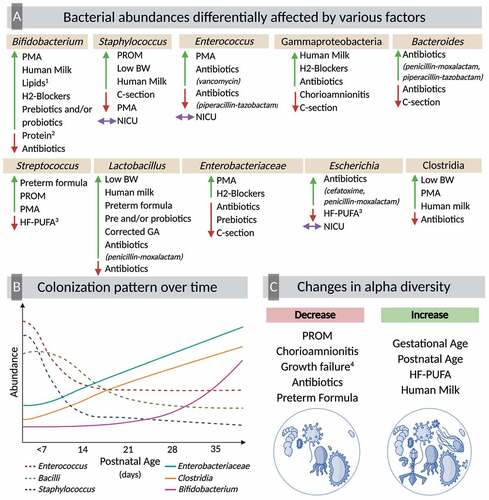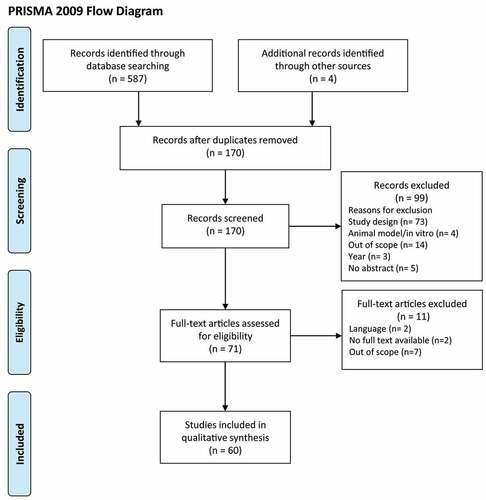This figure highlights changes in gut microbiota of PT infants associated to perinatal, physiological, pharmacological, dietary, and environmental factors. A. Based on the literature review, ten bacteria with the most evidence of change across all factors were:
Bifidobacterium, Staphylococcus, Enterococcus, Gammaproteobacteria,
Bacteroides, Streptococcus, Lactobacillus, Enterobacteriaceae, Escherichia, and Clostridia. Green arrows denote increase in abundance, red arrows denote decrease in abundance, and purple arrows denote co-colonization between PT gut and that specific factor. B. Bacterial colonization pattern of the gut microbiota of PT infants by postnatal age. After birth, the main colonizers are bacteria from the genera
Enterococcus (red),
Staphylococcus (blue), and Bacilli (green). During the first days of life, the abundance of
Enterococcus and
Staphylococcus decreases abruptly. With an increase in postnatal age,
Enterobacteriaceae (teal),
Clostridia (orange), and
Bifidobacterium (pink) become more abundant, although the colonization with the latter is delayed in PT infants. Dashed lines represent decrease in abundance. Continuous lines represent increase in abundance. C. Factors affecting alpha diversity. Evidence showed that PROM, chorioamnionitis, growth failure, the exposure to antibiotics and consumption of PT formula decrease alpha diversity. In contrast, gestational age, postnatal age, HF-PUFA enteral supplementation, and human milk (particularly MOM) consumption increase alpha diversity in the gut microbiota of PT infants.
Citation1 Ratio of grams of lipids to total enteral calories (g/kcal).
Citation2 Ratio of grams of protein to total enteral calories (g/kcal).
Citation3 Enteral supplementation.
Citation4 Growth failure: defined as weight below the 3
rd percentile on the Fenton growth charts. BW: birth weight; HF-PUFA: high fat polyunsaturated; MOM: mother’s own milk; NICU: neonatal intensive care unit; PMA: postmenstrual age; PROM: premature rupture of membranes; PT: preterm. Created with BioRender.com with images by MAL.


